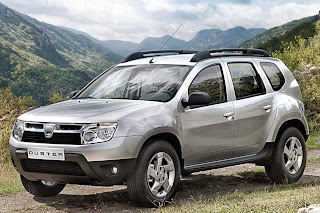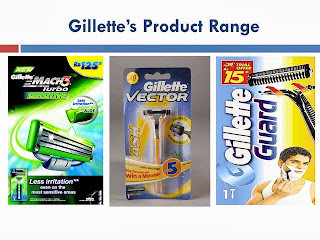In earlier posts and articles, I have written about the
challenges faced by MNCs in innovating for emerging markets. This week, I focus
on two recent success stories to see whether they offer new insights.
The two cases are Renault’s successful SUV, the Duster, and
Gillette’s razor system, Guard. Duster has enabled Renault to find a sweet spot
in the increasingly crowded Indian automotive market and achieve a significant
volume of 60,000 to date. Guard has enabled Gillette to target the huge market
of male shavers who use conventional double edge blades instead of more modern
cartridge type shaving systems.
Immersion in Customers’ Lives: Key to Success
The first thing that strikes one on reading these two cases
is how they depended on straightforward but in-depth consumer research. In both
cases, teams from the companies immersed themselves in the lives of users to
understand their needs.
In the case of the Duster, this revealed that customers were
looking for a vehicle with the looks of an SUV, but a driving experience more
akin to that of a car. This process also helped identify a vacant price band in
which the product could be offered. Specific customer requirements like better
rear air-conditioning and more comfortable rear seats also emerged from this
exercise. [As an aside though, I should mention that most foreign car makers
have known for several years that cars sold in India need to offer a much
better rear seat experience than that offered in developed markets – so I am
surprised that this was a big revelation.]
For the Guard, customer immersion alerted Gillette to the
fact that many Indians shave without running water, and they also don’t shave
every day, hence the blade system needs to be easy to clean, and also able to
deal with longer and tougher hair.
Interestingly, neither of these products required Steve Jobs
like skills of understanding needs that users had not expressed. Instead, all
that was required was in-depth understanding of existing user needs. This only
confirms what I have suspected for a long time – at the current stage of
evolution of most Indian product markets, there are enough opportunities to be
had simply by identifying user needs that have not been addressed by existing
products and solutions. No sixth sense is required!
Clean sheet or De-featuring?
While the Duster was developed by starting with an existing
Renault vehicle and adapting it to local needs, the Gillette Guard appears to
have started with a clean sheet. Readers of my previous post might recall that
I wondered when it would be appropriate to start with a clean sheet, and when
to de-feature or modify an existing product. The Duster and the Guard offer a
possible answer to this question: when you need to make a really revolutionary
change in cost structure to address an almost unthinkable price point (as in
the case of the Guard), clean sheet is the only way. The Guard razor retails
for Rs. 19 and the cartridge for Rs. 7 – neither of these price points would
have been even remotely reachable starting with a product like Gillette’s
Fusion or Mach 3 razors.
The Guard is certainly the more enterprising product of the
two. It has only a single blade (unlike Gillette’s array of high end
multi-blade products). It uses drastically fewer components than a typical
Gillette razor, uses much less material and has a very simple structure. All of
these contribute to its low cost. Yet, all reports suggest that it gives a
good, safe (cut-free) shave for customers shaving in conditions of poor light
and no running water.
But Questions Remain…
Margins & Profitability
Yet, the Guard raises several questions. Firstly, there is
no way that a product like this would yield anywhere near the 35% EBIDTA
margins that P&G (Gillette’s corporate parent) is used to from shaving
products. This is corroborated by the financial performance of Gillette India
over the last few years. By a quirk of fate, Gillette’s India operations are
not yet fully integrated with that of P&G because Gillette in India is a
publicly-listed company with an Indian partner (the Poddar group). Hence, we
have access to the financials of Gillette India. These show that while their top
line has been growing by about 15% every year, the bottom line has been
declining in most of the past few years. Though this decline can’t be attributed
to Guard alone, the fact remains that this is clearly a low margin product and
it’s likely that its increasing volumes are adding to the top line but not
helping the bottom line. While Gillette might nurture the dream of upgrading
its Guard customers to higher margin shaving products, that’s unlikely to
happen in any foreseeable future. (Instead some reports indicate growing interest
in the Guard in developed markets!).
Imitation & Appropriation of Value
The second issue is “barriers to imitation,” and concerns
related to appropriating value from a new product like the Guard. Historically,
As a company. Gillette has depended on R&D to come up with improved shaving
processes, and comprehensive intellectual property protection to ensure that
the value of its proprietary technology is not appropriated by others. For the
Sensor, Gillette built a wall of 22 patents; for the Mach 3 razor, a much
bigger wall of 57 patents. But, it’s not clear to me how Gillette will prevent
imitation of the Guard. A quick internet search does reveal some design patents
covering the design of the Guard, but there doesn’t appear to be as impregnable
a patent fortress as in the case of the Sensor or the Mach 3. Instead, Gillette
seems to be relying on the superiority of its design, the choice of materials
and the complexity of manufacturing as barriers to imitation.
Though the Duster has been successful in the market, its
success has already been threatened by the launch by competitors of new products
like the Ford Ecosport. Renault can take credit for identifying a market gap
and addressing it, but the company seems to have no easy means of preventing others
from coming up with competitive offerings to address the same market.
But the Biggest Threat maybe to Indian Companies…
The fact that MNCs are coming to grips with understanding
Indian user needs and can then use their technological strengths to address
these needs constitutes a significant threat to Indian companies. As MNCs get
their emerging market innovation act together, Indian companies’ failure to
embrace systematic methods of innovation is going to place them at a
significant disadvantage.


































Deeply insightful!
ReplyDeleteTotally agree with you on the point of "trade-up". My best guess is the value seeking Indian Customer may actually end up trading down and hitting the margins of these consumers harder. Double- Blade product users (like those using Gillette Vector) may migrate to Guard, at least start using it as the disposable option while travelling, while personal use SUV seekers (erstwhile seekers of Tata Safari or Mahindra Xylo) may now actually end up preferring the stylish EcoSport and Duster instead, hurting the bottom line of the industry.
Great article.
ReplyDeleteHaving worked on Guard*, I would like to add a point not mentioned in the numerous articles on the 'Guard approach':
To reach the very challenging cost target needed to meet the needs of this important consumer AND make a profit - product savings from consumer immersion were not enough. We also had to drive savings from the package and the supply chain - and we did that thru CUSTOMER immerision.
We had to see where our target consumers shopped - meet their merchants - understand how their business operated - how they merchandised products and innovate for them on both the package and supply chain. Guard is a great shave and its packaging is also unique.
*I retired from P&G in April of this year and am currently VP of Engineering for the Kraft Foods Group.